Pros and cons of hot stamping wallpaper
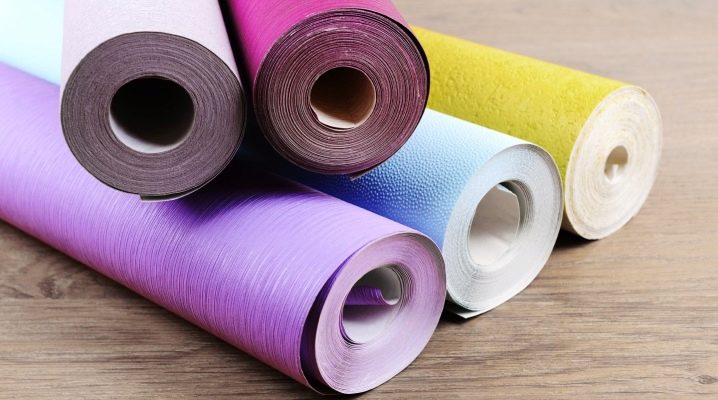
Today wallpaper is the most popular and widespread finishing material. They are used for wall and ceiling decoration. This material has high practicality, attractiveness and simplicity in terms of interior decoration. The market offers a huge variety of colors and textures. Wallpapers differ not only in appearance, but also in application methods and performance characteristics.
In the article, we will dwell on hot stamping wallpaper in more detail. Let's consider their pros and cons, analyze customer reviews about them.
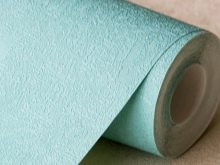
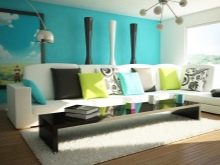
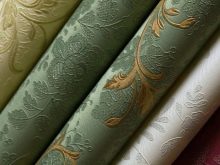
Vinyl wallpapers
This type of finishing material appeared on the domestic market not so long ago. Hot-stamped wallpaper is only vinyl canvas due to its special characteristics and composition. The material has established itself as a durable and reliable coating with a huge variety of colors. In the article, we will dwell in more detail on the composition of a product of this type.
The coating is actively used to decorate residential premises, study rooms, offices and even various commercial facilities.
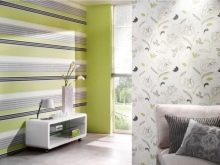


Description of technology
Hot stamping is a special technique that is used to create vinyl wallpapers:
- During production, the canvas with the decor applied to it is processed with high temperatures. For this, special ovens are used. Under the influence of heat treatment, the top layer becomes bulky and plastic.
- After that, the air layer of vinyl goes through the final stage - processing with embossing metal and rubber pressure rollers. It is these tools that create the expressive texture of the finishing material.
Various harmful chemical elements (for example, formaldehyde resins) are released from the vinyl layer under the influence of temperature. Due to this, the coating is safe to use. We'll talk more about the properties of hot-stamped wallpaper and their classification later.
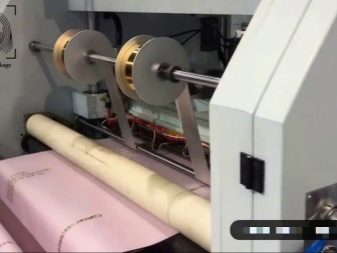
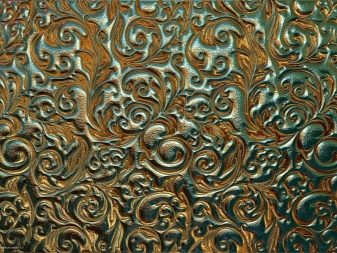
The composition of the canvas
This version of the finishing material consists of two elements:
- The foundation. All wallpapers of the above type can have two types of backing: paper and non-woven. Depending on this component, the service life and practicality of the canvas change. Non-woven finish is considered more reliable. Accordingly, the price of such products is higher.
- Polyvinyl chloride. This element creates the final look of the wallpaper. It is applied to any of the bases. The number of components may vary.

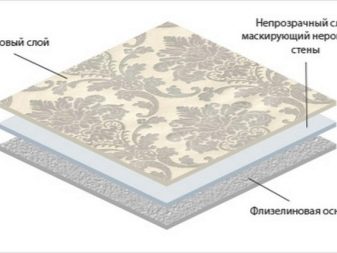
Varieties
Experts classify hot stamping patterns depending on the density of the second layer.
- Heavy vinyl. The density index of this version of the finishing material is more than 250 g / m². It is characterized by expressive relief, reliability and durability. This type of wallpaper is used when you need to hide irregularities and various defects on the wall. Due to the special properties of the coating, it is not necessary to thoroughly treat the surface. Outwardly, designers compare such wallpapers with textured embroidery or crinkled leather.
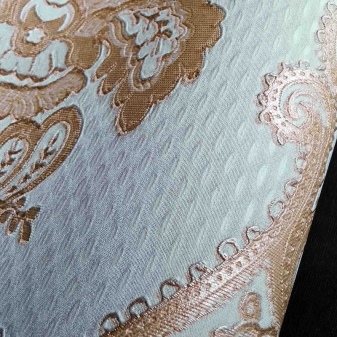
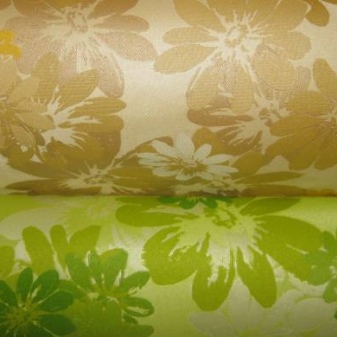
- Silk-screen printing. Attractive and light wallpaper. Their density is approximately half that of heavy vinyl. The indicator is 90-130 g / m². When making a canvas, special emphasis is placed on the reflective property of the canvas, and not on the textured image. Due to the play of light, the surface looks like natural silk and has a light, pleasant shine.
- Compact vinyl. The density of this class of wallpaper can vary from 150 to 200 g / m².Most of the models imitate various materials, both natural and artificial (fabrics, brick, wood, stone and many others). You can also find options for simulating large brush strokes. The material is characterized by great thickness, and the texture is distinguished by a special relief. The color of the canvas and the subject of the drawing can be varied.
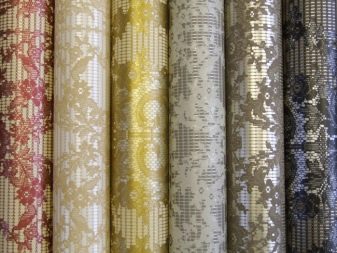
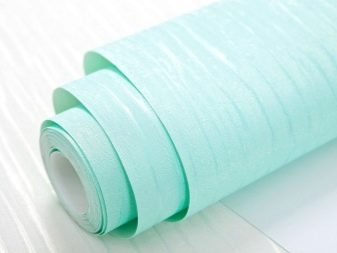
Non-woven base
Such wallpapers also have positive and negative sides.
pros
Based on customer reviews and expert opinions, a list of the advantages of non-woven hot-stamping wallpaper was compiled.
Let's dwell on the main advantages:
- Security. This option is environmentally friendly and completely safe for health. These wallpapers can be used to decorate homes where allergy sufferers, small children or pets live.
- Breathable canvases. Professionals from the sphere of decorating residential premises note that the finishing material is remarkably air-permeable, thereby reducing the likelihood of mold and other unpleasant consequences on the canvas.
- The form. The wallpaper retains its shape remarkably for many years after installation. High-quality canvases will serve for a long time without deforming and attracting attention with a rich color.

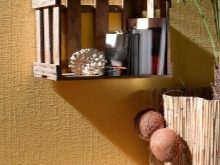
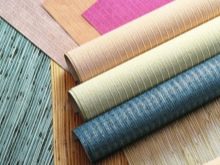
- Design. Such a finishing material provides great opportunities for decorating premises. A varied palette, textures pleasantly surprise, and an affordable price makes the material available to most buyers.
- Possibilities for decoration. Hot stamping canvases can be used as a base for painting. Processing with paint will not affect the integrity of the finishing material, and the structure will be compacted.

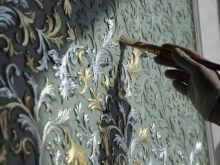
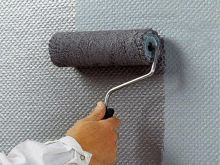
- Versatility. Non-woven canvases can be safely used for pasting various surfaces. They are perfect for wood, plasterboard or concrete walls. They can also be used to decorate chipboard walls.
- Dismantling. If you want to update the room, then the process of removing old wallpaper will not take much time. Do not soak the canvas or steam it. A regular trowel is used to remove the old coating.
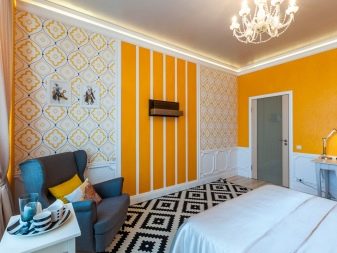
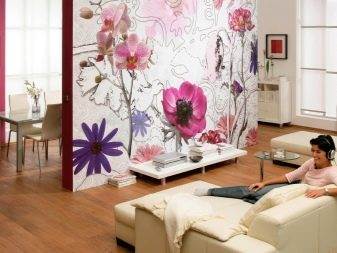
disadvantages
Despite a number of advantages, the finish also has a drawback, however, it is not inherent in all canvases.
Ordinary non-woven fabric without additional coatings and enamel (paints) cannot be washed. The cleaning process can severely damage the product. It is recommended to use only surface treatment with a conventional vacuum cleaner.
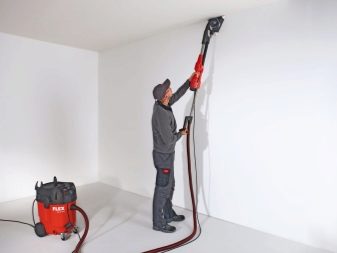
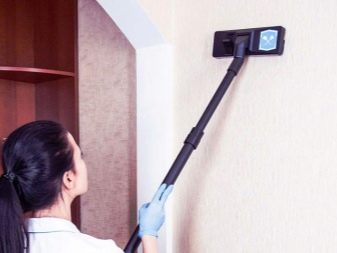
Wallpaper based on paper
Hot-stamped wallpaper on a paper base in the presence of two layers has a second name - "duplex". Material with a relief surface can have a different appearance, from monochromatic canvases with an even color without a pattern to products with an expressive pattern.
Wallpaper on a paper basis can be used for painting. Next, we will look at the advantages of this category of finishes.
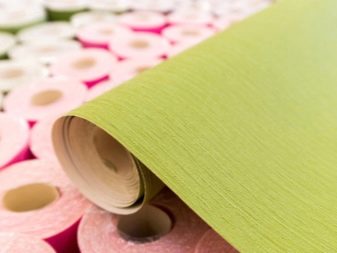
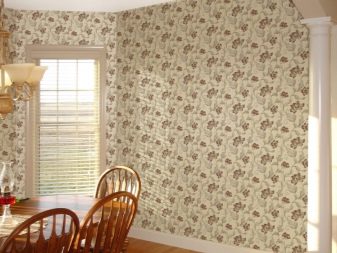
Pros:
- Wallpaper creates a comfortable microclimate in the room due to its special structure. This option is ideal for residential applications.
- They mask minor defects on the wall (cracks, scuffs, roughness).
- High-quality duplex wallpaper is much stronger and more reliable than embossed cloths, as well as single-layer paper models.
- During manufacturing, chemicals are practically not used. Thus, it is an environmentally friendly material.
- The cost of this type of wallpaper is available to most buyers. This aspect played an important role in the distribution of the products. The minimum price for one roll can be about 200 rubles.
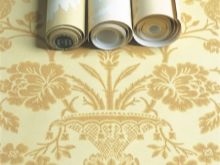

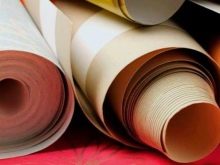
Disadvantages of embossed paper-based fabrics:
- The inability to use for the design of kitchens and children's rooms due to the low index of resistance to pollution. It is forbidden to wash them.
- The base is subject to a variety of mechanical damage.
- Low service life - about 5 years.
- The standard width of wallpaper rolls is less than a meter (typically 0.53 m), which contributes to a longer pasting process.
- In the presence of a moisture-resistant coating, it is strongly recommended to abandon their use if there is increased moisture in the room and damp walls. Otherwise, the paper will become a breeding ground for harmful bacteria, including mold and mildew.
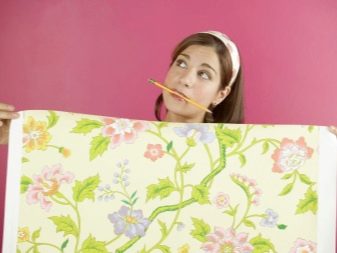
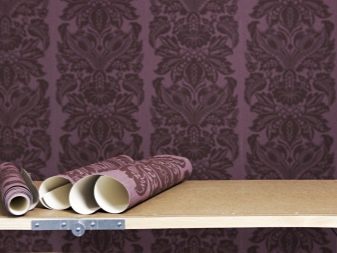
Sticking
The wallpapering process is very simple. Wallpaper does not need pre-treatment with adhesives. This simplifies both installation and pattern adjustment.
The glue diluted with water in accordance with the instructions on the package is applied only to the wall. Hot-stamped vinyl wallpaper must be glued end-to-end and at the same time smooth the canvas with a roller (as a rule, a rubber model is used). These wallpapers do not stretch under the influence of glue, so it is easy to work with them. Such wallpapers can be glued directly to a concrete wall without preliminary staining, since their density is high.
This is ideal for those who carry out repair work on their own, without the help of specialists.


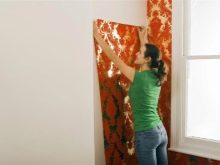
Customer opinions
Customers who managed to purchase hot-stamped wallpaper and used it on the basis of their apartments share their opinions about the product. 90% of all reviews are positive. Many users note that they did not find any flaws during use or gluing.
There are also negative reviews. Some people find that hot stamping canvases are easily damaged, especially during repairs. Also, customers indicate such disadvantages: the need for wall processing, high weight and high price for some models.
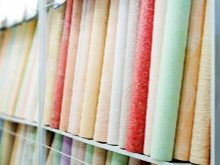


You can find out interesting facts about wallpaper production from the video below.













The comment was sent successfully.